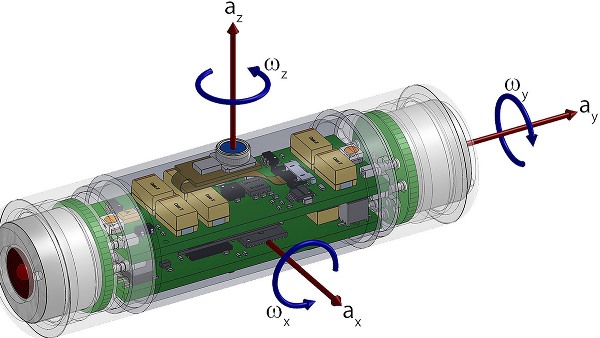It's Not Easy Being Pink: Fish Drone Shows Hardships of Salmon Travel
| Kat De Guzman | | Dec 08, 2014 09:22 AM EST |
(Photo : Photo distributed by Pacific Northwest National Laboratory) An illustration of the "Sensor Fish" was shown by Pacific Northwest National Laboratory.
A fish drone called "Sensor Fish" will be able to give the researchers a sneak peak of how salmons travel, collecting information that can be used to evaluate conditions encountered by the fish as they pass through hydroelectric dams on their way to the ocean.
Like Us on Facebook
Salmons have to make it through the open ocean where predatory birds, other fish and sea lions will be trying to eat them. The salmons will also dodge turbine blades and have to swirl through the man-made currents from the hydroelectric dams.
The fish drone has been developed by the Pacific Northwest National Laboratory (PNNL) and they have programmed it to reveal what the salmons experience when passing through the obstacles.
The Ice Harbor dam located in Washington was the first to have the Sensor Fish tested on its waters. The fake fish was tasked to move through the turbine, the chambers and the waves in order to get to the downstream of the dam from the upriver.
It was found out that most fish will make it through the dams as it has been recorded that there is a 90 percent survival rate for the fishes. The 10 percent is believed to be stuck in the blades of the turbine but due to the use of the Sensor Fish, the researchers were able to find out about another culprit, which is the pressure change.
Daniel Deng, one of the chief scientists at PNNL, said that they first studied the Sensor Fish back in 2004. Deng explains, "The earlier Sensor Fish design helped us understand how intense pressure changes can harm fish."
He adds that the new model will give more accurate readings of the pressure effects in various dams all over the world. He noted, "It's now able to study the fish-friendliness of dams throughout the U.S. and abroad, not just in the Pacific Northwest."
TagsFish Drone, salmon, show how it likes to be the fish, hydropowerplants, Pressure
©2015 Chinatopix All rights reserved. Do not reproduce without permission
EDITOR'S PICKS
-

Did the Trump administration just announce plans for a trade war with ‘hostile’ China and Russia?
-

US Senate passes Taiwan travel bill slammed by China
-

As Yan Sihong’s family grieves, here are other Chinese students who went missing abroad. Some have never been found
-

Beijing blasts Western critics who ‘smear China’ with the term sharp power
-

China Envoy Seeks to Defuse Tensions With U.S. as a Trade War Brews
-

Singapore's Deputy PM Provides Bitcoin Vote of Confidence Amid China's Blanket Bans
-

China warns investors over risks in overseas virtual currency trading
-

Chinese government most trustworthy: survey
-

Kashima Antlers On Course For Back-To-Back Titles
MOST POPULAR
LATEST NEWS
Zhou Yongkang: China's Former Security Chief Sentenced to Life in Prison

China's former Chief of the Ministry of Public Security, Zhou Yongkang, has been given a life sentence after he was found guilty of abusing his office, bribery and deliberately ... Full Article
TRENDING STORY

China Pork Prices Expected to Stabilize As The Supplies Recover

Elephone P9000 Smartphone is now on Sale on Amazon India

There's a Big Chance Cliffhangers Won't Still Be Resolved When Grey's Anatomy Season 13 Returns

Supreme Court Ruled on Samsung vs Apple Dispute for Patent Infringement

Microsoft Surface Pro 5 Rumors and Release Date: What is the Latest?










